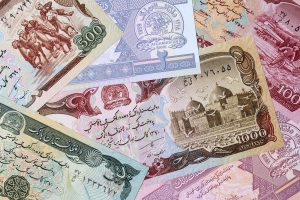Afghanistan continues to feel the aftershocks of the abrupt withdrawal of U.S. and coalition forces in August 2021, particularly the ensuing significant economic contraction. Although the economy is no longer in freefall, economic hardship is still hitting ordinary citizens ruthlessly, and more than half of the population is in need of the most basic necessities of life.
According to the United Nations Office for the Coordination of Humanitarian Affairs (UNOCHA), 20 million people are faced with acute hunger including 6 million people at emergency levels. According to the U.N’s International Organization for Migration (IOM), in September 2022 — just a year after the Taliban takeover — “an estimated 24.4 million people – 59 per cent of the population in Afghanistan – are dependent on international aid and emergency relief in their day-to-day lives.” Nonetheless, there has been some improvement in the general labor demand according to the World Bank.
To combat the economic crises and transform the economy, one important tool is the national budget. However, the Taliban authorities do not seem to be using this tool appropriately. After approving the first full year’s budget earlier in March 2022, the Taliban started implementing the national budget without making the details public. It is also notable that two important sectors — health and education — were partially funded by the United Nations.
The total volume of the national budget was 231 billion Afghani ($2.65 billion) with a budget deficit of 40 billion Afghani. There were no details as what the priorities of the public sector are or how resources would be distributed among different sectors. This lack of transparency not only increased the risk of the misuse of resources, but it also hampered the efficiency and effectiveness of the money that was to be spent.
According to the World Bank, the Taliban regime has collected 144 billion Afghani ($1.64 billion) in revenues. Inflation stood at 11 percent by November 2022, as per the figures shared by the World Bank. The bank predicted that Afghanistan’s real GDP would further contract through the end of 2022.
Transparency and accountability are two main pillars that could help establish a stable public financial management system in Afghanistan. Both of these are missing from the Taliban’s version of governance. The Supreme Audit Office, which is responsible for auditing financial statements, remains inactive after more than a year. The parallel functions of some budgetary units with the National Development Corporation are yet to be resolved.
Revenue collection seems to have improved, as per reporting of the World Bank and the Ministry of Finance. However, the overall tax network has been reduced. After a gap of a few years, the extractive sector seems to have potential still. Weekly updates regarding revenues are shared; however, the sector’s related projects and implementation conditions are unknown. Given the extreme volatility of the extractive sector, the contracts and implementation conditions should be made clear.
After the immediate seizure of Afghanistan’s forex reserves, the United States Department of Treasury created the Afghan Fund in September 2022 and transferred $3.5 billion from the Afghan reserves frozen abroad. This fund serves as a parallel to the central bank and carries functions to maintain macroeconomic stability. According to the Special Inspector General for Afghanistan Reconstruction (SIGAR), $2 billion more is expected to be added to this fund from the Afghan forex reserves from banks in the UAE and Europe. The short-term purpose of the fund is to continue disbursement of dollars to maintain monetary and macroeconomic stability as well as pay for critical imports including electricity and Afghanistan’s arrears to international financial institutions. The long-term goal of the fund is to completely hand over these reserves back to where it belongs, Afghanistan’s central bank, Da Afghanistan Bank.
The Taliban government, however, does not appear to be serious about fixing Afghanistan’s economy. No policy or strategy has been announced that could provide a vision of economic development. Private sector activities are undermined by a lack of confidence and restrictions on cash withdrawals, leading to reduced investment demand. A lack of a clear economic development strategy is also an indication that the Taliban authorities are not necessarily all that interested in promoting economic growth.
No mainstream developmental projects have been approved or are underway in the health and education sector. Both the health and educations sectors act as the backbone of the economy by preventing leakages from the economy as a whole and acting as sectors that could produce capable leaders to serve the country. The leadership of the education ministry has changed twice changed since the commencement of Taliban regime.
According to the World Bank, “limited educational opportunities for girls, and barriers to completing 12 years of education cost countries between $15 trillion and $30 trillion in lost lifetime productivity and earnings.” The Taliban ban on girls’ secondary education cost the Afghan economy over $500 million in just 12 months, per UNICEF estimates. Now that the women are banned from all schooling, and nearly all forms of work as well, the economic cost to Afghanistan will be too high for a country that is already running short of its potential.
In short, if the Taliban want to achieve sustainable economic growth, they have to bring women back into the workforce — and this will necessitate resuming women’s education as well — and encourage their full participation in the economy.

































